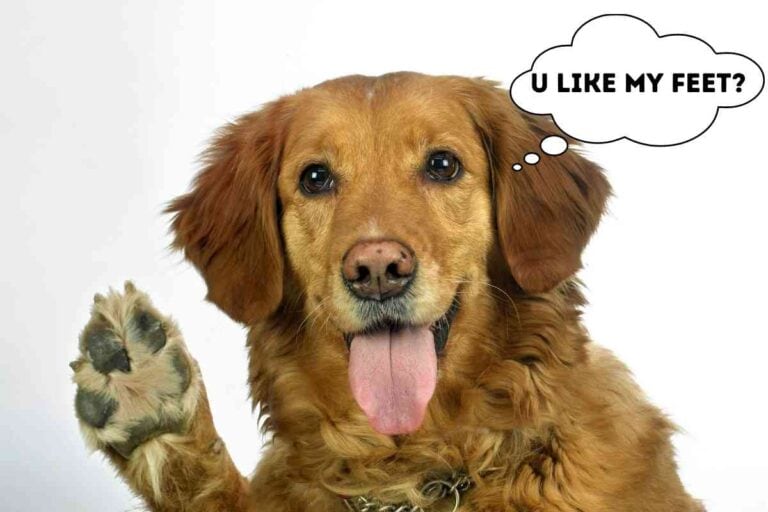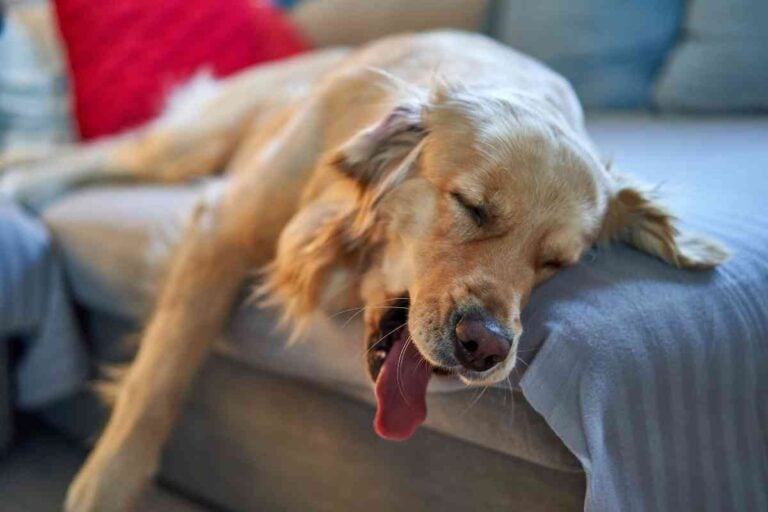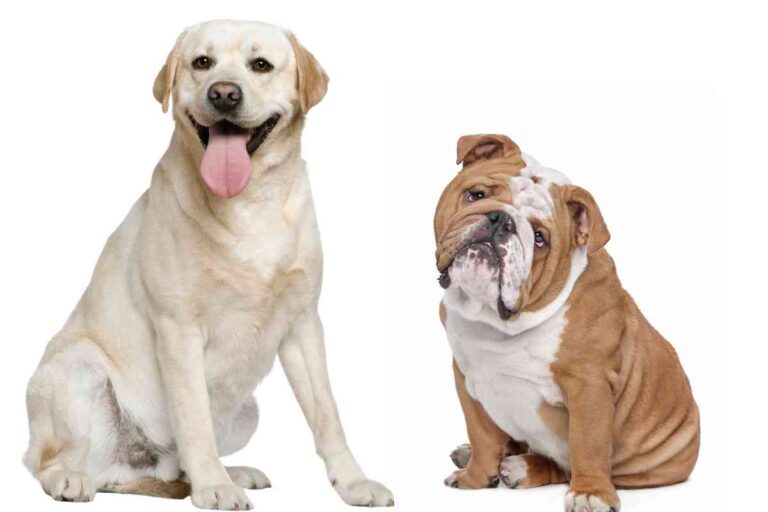When Does A Golden Retriever Puppy’s Tail Get Fluffy?
If you are familiar with Golden Retrievers, then you are aware that they are known for their stunning hair coats, but when do they get that fluffy tail? Now, if you have been around a Golden Retriever puppy, then you know that their coat is not the same when they are a puppy as it is when they get older. Golden Retrievers have coat stages and this determines when their tail will get fluffy.
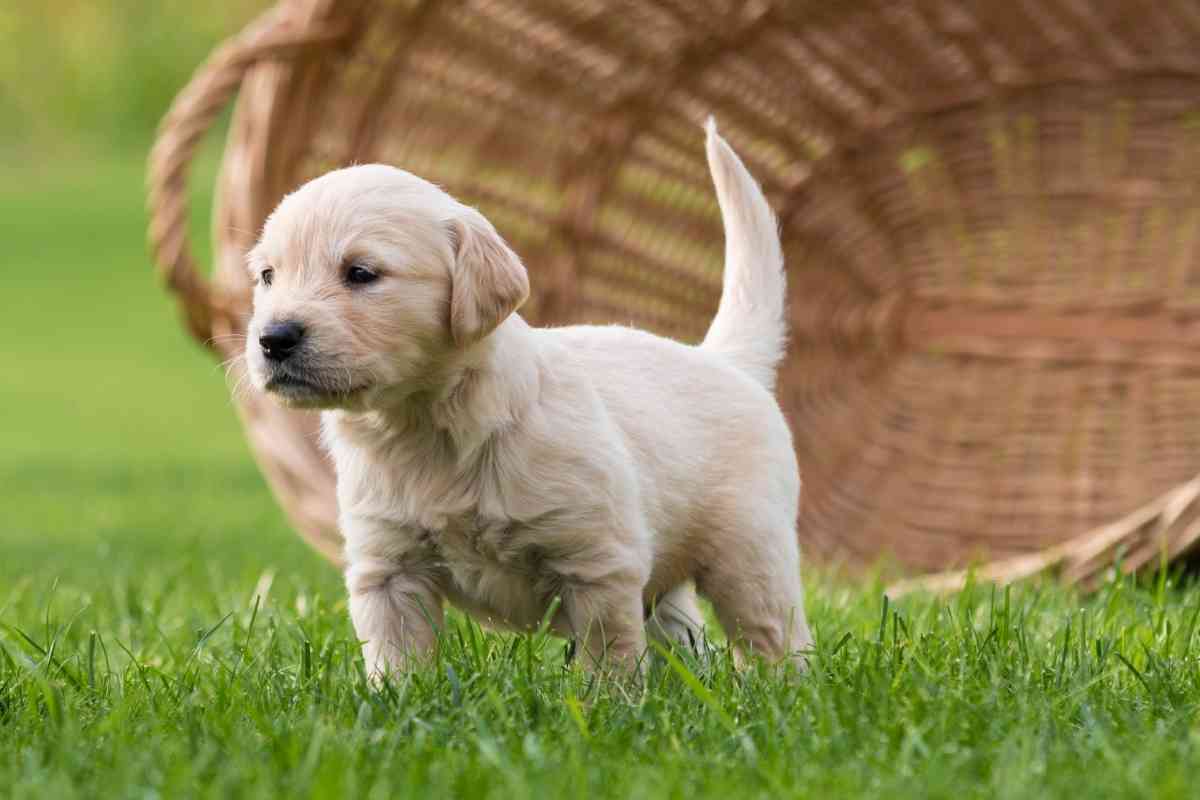
When do Golden Retrievers’ tails get fluffy?
Golden Retrievers will begin to develop their adult coat at approximately 3 to 4 months of age, and this will begin at their tail. Over the next 18 months, their coats will change and develop into their full adult hair coat, which includes their fluffy tail.
Knowing when your Golden Retriever’s coat will change and when their tail will start to get fluffy is good knowledge to have so you can be prepared to care for their new adult coat as it comes in.
Golden Retrievers make incredible family pets, and caring for their beautiful haircoat is important. The information in this guide has been provided by expert breeders to give you accurate information on the hair coats of Golden Retrievers.
When Do Golden Retrievers’ Tails Get Fluffy?
As Golden Retrievers begin to lose their soft and fuzzy puppy coat, they will have their adult coat grow in with the feathering that Golden Retrievers are known for.
At approximately the 3 to 4-month age mark, a Golden Retriever will begin to get their adult coat, which will usually start at its tail. It can take up to 18 months for your Golden Retriever to develop the full feathering and fluffy tail that you are accustomed to seeing.
Coat Stages Of A Golden Retriever
When a Golden Retriever is a young puppy, they are going to have the soft fuzzy puppy coat that everyone loves about a Golden Retriever puppy. However, this puppy coat will change as your dog gets older.
At approximately the 3-month age mark, you may start to notice your dog growing their adult hair coat. This will start on their tail and then slowly spread to their legs and stomach. Once these places have begun to grow the long and feathered hair coat, then the rest of your dog’s body will follow.
Most Golden Retrievers will grow a hair coat that is slightly darker than their puppy coat.
When your dog develops their adult coat, and the type of coat they develop is genetic. Your puppy may not get their hair coat until later than 3 months of age if their parents developed their hair coat later, and the amount of feathering is also dependent on the type of coat their parents had.
Does A Golden Retriever Have Two Coats?
When your Golden Retriever begins to develop their adult coat, you may think that it will shed its fuzzy puppy coat. However, this is not the case. As their adult coat begins to come in, it will just push the puppy coat aside.
Therefore, your Golden Retriever does have a double coat.
The puppy coat then becomes your dog’s undercoat. This will help to insulate and keep your dog warm as needed. The longer adult coat becomes the typical outer hair coat that you are used to seeing on Golden Retrievers.
Their adult coat can change as well depending on the environment that the dog is in and how much protection they need from temperatures and moisture. You may notice their coat shedding in the summer in order to help keep the dog cool.
How To Care For A Golden Retrievers Coat
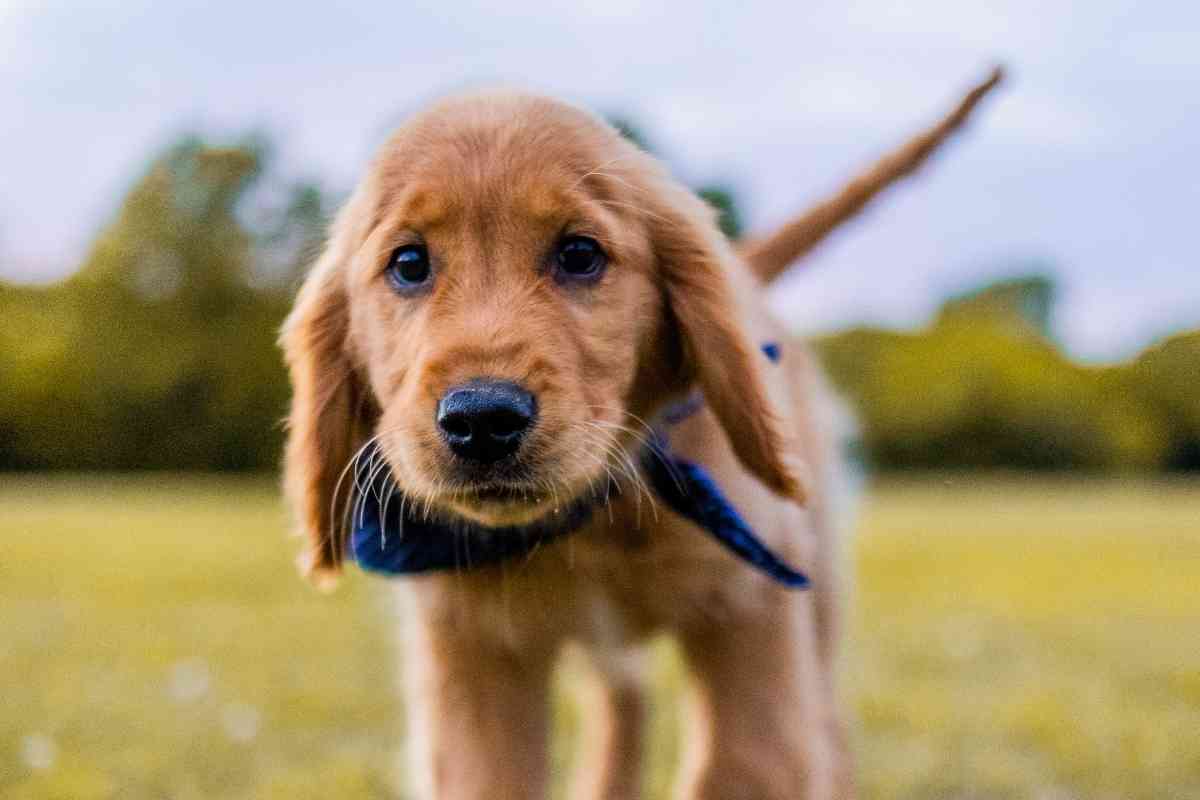
Golden Retrievers have beautiful hair coats and it is important to care for them properly to keep your dog’s skin and hair healthy.
Not only do you want to maintain your dog’s hair and skin, but by frequently brushing their coat it gives you the opportunity to notice any different changes on your dog as well.
It is a good idea to brush your Golden Retriever’s hair coat at least once per week. This will help to remove dead skin as well as redistribute the natural oils on your dog’s skin that help their hair coat stay shiny.
A Golden Retriever will shed, but it is most common for them to shed in the spring and fall due to the seasons changing.
When your dog is shedding in the spring, they are getting rid of the thick undercoat to prepare for warmer weather with a light undercoat. In the fall, they are preparing to grow in a thicker undercoat to help keep them warm.
These time periods are important for regular brushing in order to help your dog shed hair out.
You can use a brush intended for long-haired dogs and brush gently to remove any excess hair and brush through any knots that your dog’s coat might have. It is also a good idea to use an undercoat brush to help brush through that fuzzy undercoat that your dog has.
How Often Should You Bathe Your Golden Retriever?
If possible, it is a good idea to give your Golden Retriever a bath every 1 to 2 months. This can be especially helpful during peak shedding seasons because a bath with a good brushing can help them to shed the undercoat they are trying to get rid of.
It is important to bathe your dog with shampoo intended for dogs and to give yourself plenty of time. Due to the long coat of a Golden Retriever, the bathing process can be time-consuming as you need to thoroughly wash your dog, dry them, and then completely brush through their coat in order to keep it from getting tangled.
Some owners of Golden Retrievers find it easier to take them to a professional groomer who is experienced in bathing and brushing out a Golden Retriever’s long coat. A professional groomer can be beneficial because they can also trim their nails, clean their ears, and trim any excess feathering.
Does Diet Affect Your Dog’s Haircoat?
The diet that your dog consumes can affect their hair coat. It is important that your dog receives all the needed nutrients in order to grow a healthy hair coat and eliminate the risk of health issues.
Dogs need a balance of protein, fat, carbohydrates, and fiber. They also need to receive the proper amounts of vitamins and minerals. Hair is composed almost entirely of protein so if there is a large amount of protein lacking in your dog’s diet, this can show in the form of dry and brittle hair that lacks shine.
Most dog foods that are sold over the counter encompass the complete nutrition that a dog needs in their diet.
If you are choosing to go with homemade dog food or raw food diet then it is important to seek the help of your veterinarian or a canine nutritionist in order to ensure your dog is getting the proper nutrients.

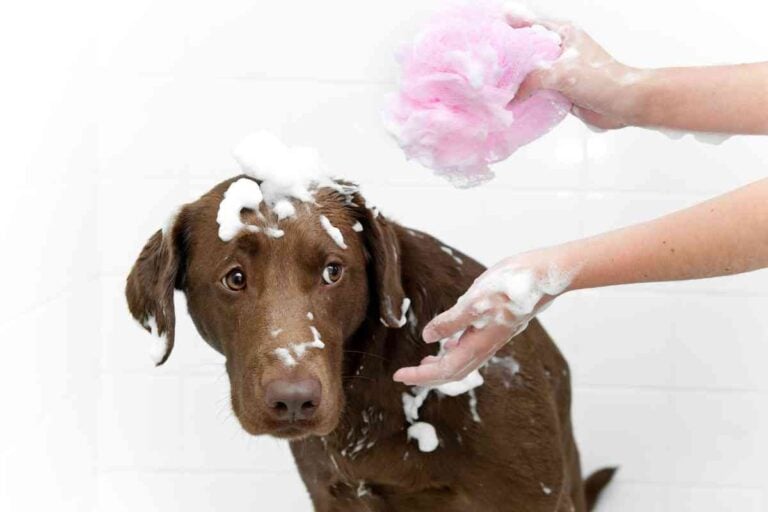
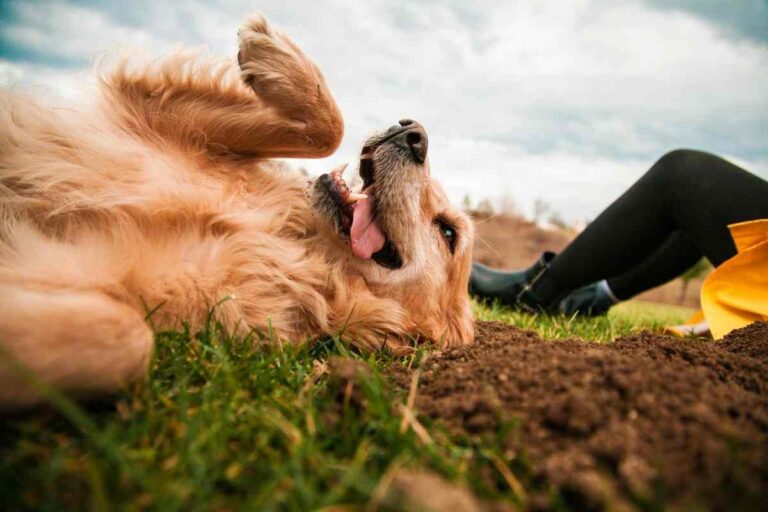
![Should Golden Retrievers Eat Large Breed Food? [Vet Explains!] 5 Should Golden Retrievers Eat Large Breed Food? [Vet Explains!]](https://retrieveradvice.com/wp-content/uploads/2022/02/Should-Golden-Retrievers-Eat-Large-Breed-Food-Vet-Explains-768x512.jpg)
